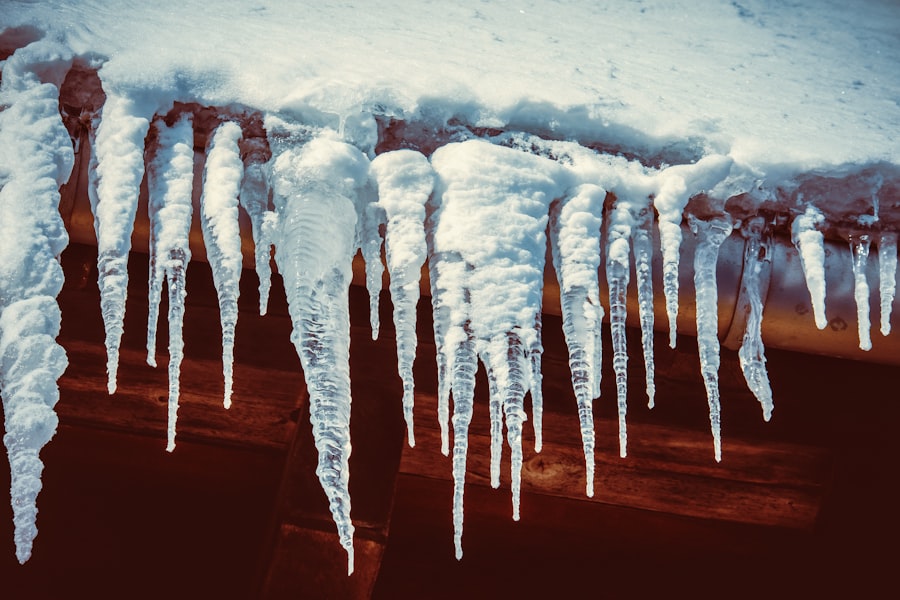The Kola Superdeep Borehole, located on the Kola Peninsula in Russia, stands as a monumental achievement in the field of geology and deep Earth exploration. Initiated in 1970 by Soviet scientists, this ambitious project aimed to penetrate the Earth’s crust to unprecedented depths. The borehole, which ultimately reached a depth of 12,262 meters (40,230 feet), was intended to provide insights into the geological structure of the Earth and the processes that govern its formation.
As the deepest artificial point on Earth, the Kola Superdeep Borehole has become a symbol of human curiosity and determination to understand the planet’s inner workings. Over the years, the Kola Superdeep Borehole has attracted attention not only for its depth but also for the scientific discoveries made during its drilling. The project has provided invaluable data about the Earth’s crust, including information about rock types, temperature gradients, and seismic activity.
Despite its closure in 1992, the borehole continues to be a focal point for researchers interested in geology, geophysics, and the broader implications of deep Earth studies. The findings from this project have sparked discussions about the nature of our planet and have opened new avenues for exploration and understanding.
Key Takeaways
- The Kola Superdeep Borehole was a scientific drilling project in Russia that aimed to penetrate the Earth’s crust and study its composition.
- The project’s purpose was to study the Earth’s crust, mantle, and potentially reach the boundary between the crust and the mantle.
- During the drilling, a temperature anomaly was discovered at a depth of about 12 kilometers, where the temperature was much higher than expected.
- The anomaly was found to be at a depth of approximately 12 kilometers, where the temperature reached 180 degrees Celsius, instead of the expected 100 degrees Celsius.
- Potential explanations for the anomaly include radioactive decay, frictional heating, and the presence of hydrothermal fluids.
The Purpose of the Kola Superdeep Borehole Project
The primary objective of the Kola Superdeep Borehole project was to explore the Earth’s crust in order to gain a better understanding of its composition and behavior. Scientists sought to investigate various geological phenomena, including the nature of rock formations, the presence of minerals, and the thermal properties of the crust. By drilling deeper than ever before, researchers aimed to collect samples that would shed light on the processes that shape the Earth’s surface and contribute to our understanding of tectonic activity.
In addition to its scientific goals, the Kola Superdeep Borehole project also served as a demonstration of technological prowess during a time when the Cold War was at its height. The Soviet Union invested significant resources into this endeavor, showcasing its capabilities in scientific research and engineering.
As such, it became a symbol of national pride and ambition, reflecting the desire to push boundaries in both science and technology.
The Discovery of the Temperature Anomaly

One of the most intriguing discoveries made during the Kola Superdeep Borehole project was the identification of a significant temperature anomaly at depths exceeding 12 kilometers. As drilling progressed, scientists observed that temperatures increased at a much faster rate than anticipated. While conventional geological models predicted a temperature increase of approximately 25-30 degrees Celsius per kilometer of depth, measurements taken from the borehole indicated temperatures reaching around 180 degrees Celsius (356 degrees Fahrenheit) at depths of 12 kilometers.
This unexpected temperature anomaly raised numerous questions among researchers. The findings challenged existing theories about heat flow within the Earth’s crust and prompted scientists to reconsider their understanding of geothermal gradients. The anomaly suggested that there were additional factors influencing temperature distribution at such depths, leading to further investigations into the geological processes at play.
This discovery not only highlighted the complexities of Earth’s geology but also underscored the importance of empirical data in shaping scientific theories.
The Depth of the Anomaly
| Depth | Anomaly Type | Location |
|---|---|---|
| 100 meters | Geological | Pacific Ocean |
| 75 meters | Magnetic | Antarctica |
| 120 meters | Unknown | Bermuda Triangle |
The depth at which this temperature anomaly was discovered is particularly noteworthy. At 12 kilometers below the Earth’s surface, the Kola Superdeep Borehole reached depths that had previously been deemed unattainable for scientific exploration. This remarkable achievement allowed researchers to gather data from a region of the Earth that had remained largely unexplored until that point.
The depth itself posed significant challenges for drilling operations, including extreme pressure and high temperatures that tested the limits of technology. The implications of reaching such depths extend beyond mere curiosity; they provide critical insights into the Earth’s crustal composition and behavior. The data collected from this depth has contributed to a more nuanced understanding of geological processes, including those related to plate tectonics and volcanic activity.
By examining rock samples and temperature readings from this extreme environment, scientists have been able to refine their models of how heat is generated and transferred within the Earth, leading to advancements in both theoretical and applied geology.
Potential Explanations for the Anomaly
The discovery of the temperature anomaly at such depths has prompted various hypotheses regarding its origin.
As isotopes decay, they release heat, which could contribute to elevated temperatures in specific areas of the Earth’s crust.
This process may be particularly pronounced in regions with high concentrations of uranium or thorium, leading to localized heating that deviates from standard geothermal gradients. Another possibility is that fluid movement within the Earth’s crust plays a significant role in heat distribution. Hydrothermal systems can transport heat from deeper layers to shallower regions, resulting in temperature variations that may not align with traditional models.
Additionally, tectonic activity could influence heat flow by altering rock formations and creating pathways for thermal energy to escape or accumulate. These potential explanations highlight the complexity of geological processes and underscore the need for continued research to unravel the mysteries surrounding temperature anomalies in deep Earth environments.
The Significance of the Anomaly

The significance of the temperature anomaly discovered at the Kola Superdeep Borehole extends far beyond its immediate geological implications. It challenges long-held assumptions about heat flow within the Earth’s crust and raises fundamental questions about our understanding of geothermal processes. The anomaly serves as a reminder that there is still much to learn about our planet’s interior and that empirical data can often defy established theories.
Moreover, this discovery has broader implications for various fields of study, including geophysics, volcanology, and even climate science. Understanding how heat is distributed within the Earth can inform models related to volcanic eruptions, seismic activity, and even geothermal energy production. As researchers continue to investigate these anomalies, they may uncover new insights that could lead to advancements in energy technology or improved predictions regarding natural disasters.
Implications for Earth’s Geology
The findings from the Kola Superdeep Borehole have significant implications for our understanding of Earth’s geology as a whole. The temperature anomaly suggests that geological processes are more complex than previously thought, prompting scientists to reevaluate existing models of heat flow and crustal behavior. This reevaluation may lead to new theories regarding tectonic movements, mineral formation, and even continental drift.
Furthermore, these insights can enhance our understanding of resource distribution within the Earth. Knowledge about temperature gradients and geological formations can inform exploration efforts for natural resources such as oil, gas, and minerals. By integrating findings from deep Earth studies with surface-level exploration techniques, researchers can develop more effective strategies for resource extraction while minimizing environmental impact.
The Impact on Scientific Understanding
The Kola Superdeep Borehole project has had a profound impact on scientific understanding across multiple disciplines. The data collected from this extraordinary endeavor has contributed to advancements in geology, geophysics, and even planetary science. By providing direct evidence from deep within the Earth, researchers have been able to refine their models and theories regarding geological processes.
Additionally, this project has inspired a new generation of scientists to pursue deep Earth exploration. The challenges faced during drilling operations have led to innovations in technology and methodology that continue to influence contemporary research efforts. As scientists build upon the foundation laid by the Kola Superdeep Borehole project, they are likely to uncover even more groundbreaking discoveries that will further enhance our understanding of Earth’s complex systems.
Challenges in Studying the Anomaly
Despite its significance, studying the temperature anomaly at such depths presents numerous challenges for researchers. The extreme conditions encountered at 12 kilometers below the surface—high pressure, elevated temperatures, and difficult access—make it challenging to conduct experiments or gather additional data. These factors limit opportunities for direct observation and experimentation in this unique environment.
Moreover, interpreting data from such depths requires sophisticated modeling techniques and interdisciplinary collaboration among geologists, geophysicists, and other specialists. The complexity of geological processes means that researchers must consider multiple variables when analyzing findings from deep Earth studies. This collaborative approach is essential for developing comprehensive models that accurately reflect the intricacies of Earth’s geology.
Future Research and Exploration
Looking ahead, future research related to the Kola Superdeep Borehole and its temperature anomaly holds great promise for advancing scientific knowledge. Continued exploration efforts may focus on drilling deeper or utilizing advanced technologies such as remote sensing or seismic imaging to gather additional data from inaccessible regions. These innovative approaches could provide new insights into geological processes that remain poorly understood.
Furthermore, interdisciplinary collaboration will be crucial for addressing unanswered questions related to deep Earth phenomena. By bringing together experts from various fields—geology, geophysics, materials science—researchers can develop more holistic models that account for complex interactions within Earth’s interior. As technology continues to evolve, opportunities for exploration will expand, paving the way for groundbreaking discoveries that could reshape our understanding of our planet.
Conclusion and Final Thoughts
In conclusion, the Kola Superdeep Borehole stands as a testament to human curiosity and scientific ambition. Its discoveries—particularly the unexpected temperature anomaly—have challenged existing theories about Earth’s geology and opened new avenues for exploration and understanding. As researchers continue to investigate this remarkable site and its implications for deep Earth studies, they are likely to uncover further insights that will enhance our comprehension of our planet’s inner workings.
The significance of these findings extends beyond academic interest; they have practical implications for resource management, natural disaster prediction, and energy production. As scientists build upon the legacy of the Kola Superdeep Borehole project, they will undoubtedly contribute to a deeper understanding of Earth’s complexities—an endeavor that remains as vital today as it was when drilling first began over five decades ago.
The Kola Superdeep Borehole, renowned for its extreme depth, has intrigued scientists with its unexpected temperature anomalies. As researchers delved deeper, they encountered temperatures soaring to 180°C (356°F), far exceeding initial predictions. This phenomenon has sparked discussions about the geothermal gradient and the Earth’s crust’s thermal properties. For those interested in exploring more about such geological marvels and their implications, a related article can be found on
